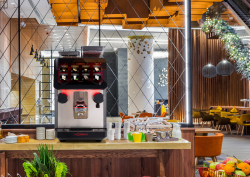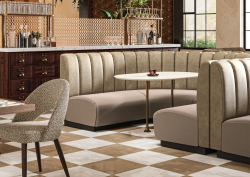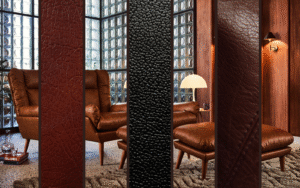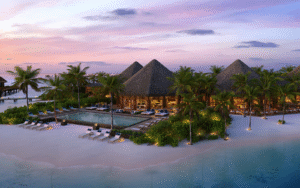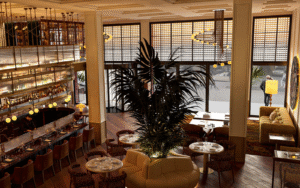With sustainability at the heart of the Sanderson Design Group strategy moving forward, we caught up with Ben Naylor to dig a little deeper into the groups Sustainability Pledge and find out what it actually means for SDG to ‘Live Beautiful’…

To ‘Live Beautiful’ from a Sanderson Design Group (SDG) perspective, is about embracing sustainability while at the same time, preserving traditions and design heritage – the two are inextricably intertwined. It is about living well with respect, care and compassion. Combine this ethos with a Zero by Thirty pledge and you are on a winning and admirable road forward. SDG has been putting a lot of work into running a business on sound Environmental, Social and Governance principles, and we used this opportunity to find out what this means in more practical terms.
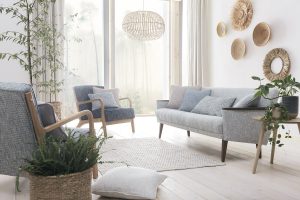
Image credit: Sanderson Design Group
Hotel Designs: Do you have a strategy on how you will tackle climate change within your industry?
Ben Naylor: Absolutely! Since 2020, Sanderson Design Group (SDG) and its brands have been executing a fully formulated sustainability strategy that treats all areas of its creative process, including design, manufacture and distribution. This strategy, awarded Planet Mark accreditation, has as its flagship policy the Zero By 30 pledge for net zero carbon emissions by 2030.
A significant part of this activity occurs within our manufacturing operations, as they contribute 80 per cent of our internal CO2 emissions. We are investing in more efficient production processes, solar panels and energy reduction programmes. The plan is well articulated, but we’re always on the lookout for new technologies that can fast-track our Zero By 30 goals.
HD: How will you encourage your partners to support you in your vision for sustainability?
BN: It’s so important to spread the word about sustainability, as well as celebrate your achievements. At SDG, we share our plans with customers and investors through regular presentations and correspondences. We are also proud members and contributors to many charities and institutions which champion sustainability, including The Furniture Makers’ Company and Walpole.
For us, the most significant part of leveraging change is how closely we work with our supplier base. Our newly rewritten supplier manual sets out our expectations of supplier standards, ensuring we’re working with partners who share our vision of sustainability. In particular, we’re keen they recognise our commitment to reducing CO2 emissions.
HD: What concepts are you currently exploring in the development and innovation of product and design?
BN: In our packaging, we’ve waved goodbye to single-use plastics. When wrapping fabrics, sugar cane is our new go-to, and for parcels, the tape is now made from paper. These seemingly small changes add up very quickly to make a big shift!
Excitingly (and quite innovatively within the interiors industry) Clarke & Clarke has released its Eco Sustainable Weaves collection. Made entirely of recycled yarns derived from single-use plastics, the brand has created a compelling luxury design story for homes. With plans to continue using the same recycled yarns in upcoming collections, we’re helping to answer the question ‘Can fashionable interiors be sustainable?’ with an emphatic Yes!
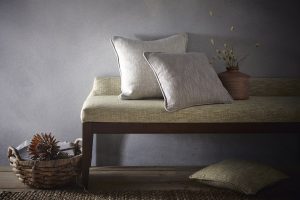
Image credit: Sanderson Design Group
HD: With the pressing need by the clients for more green manufacturers, what are the new processes, measures and/or adaptations you are making to make your manufacturing process more sustainable?
BN: Standfast & Barracks, our fabric printers, have since 2021 only used cotton from the Better Cotton Initiative (BCI) on all 100% cotton bases. BCI cotton uses a traceable sourcing route to ensure we can monitor environmental impacts, safe working practices, and fair treatment of all persons in the supply chain. It’s all part of aligning with the Global Ethical Trading Policy.
Standfast & Barracks’ cloth range also offers base fabrics sourced in collaboration with the Seaqual Initiative, using recycled plastic salvaged from oceans to create an innovative, quality cloth choice.
Our new Ecofast™ print process, the result of significant innovation, provides our customers with the opportunity to utilise the latest digital printing technology. Ecofast™ is OEKO-TEX® Certified for all cotton-based fabrics and boasts a vastly reduced water consumption compared to conventional and Digital Reactive printing.
Additionally, Standfast & Barracks is now certified by The Global Organic Textile Standard (GOTS). The world-leading textile processing standard for organic fibres, GOTS contains stringent ecological and social criteria for processing, manufacturing and trading our organic textiles.
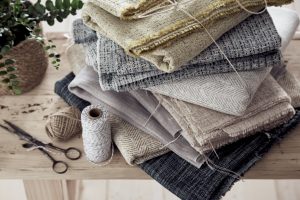
Image credit: Sanderson Design Group
HD: How can designers overcome perceptions that sustainability is a trade-off?
BN: By understanding that it doesn’t have to be! We’ve been able to make vast improvements with no loss of quality. In fact, it has helped us totally rethink how we want to do things. Developments are being made all the time, too, which should help open-minded designers feel reassured that choosing the sustainable option needn’t mean sacrificing other elements.
HD: And finally, are you finding British-made is the way forward in your sustainability journey?
BN: At SDG, we’re pretty unique in the market for owning and operating a British manufacturing base and design studio. This means we’ve always been well-placed to understand the value of being British-made. Being able to laser focus our production line within one country reduces the kinks which can slow down progress on sustainability, too.
Additionally, we source the majority of our products from the UK, giving us far greater control, especially where we supply from Standfast & Barracks and our wallpaper printers, Anstey.
Sanderson Design Group is one of our Recommended Suppliers and regularly features in our Supplier News section of the website. If you are interested in becoming one of our Recommended Suppliers, please email Katy Phillips.
Main image credit: Sanderson Design Group






